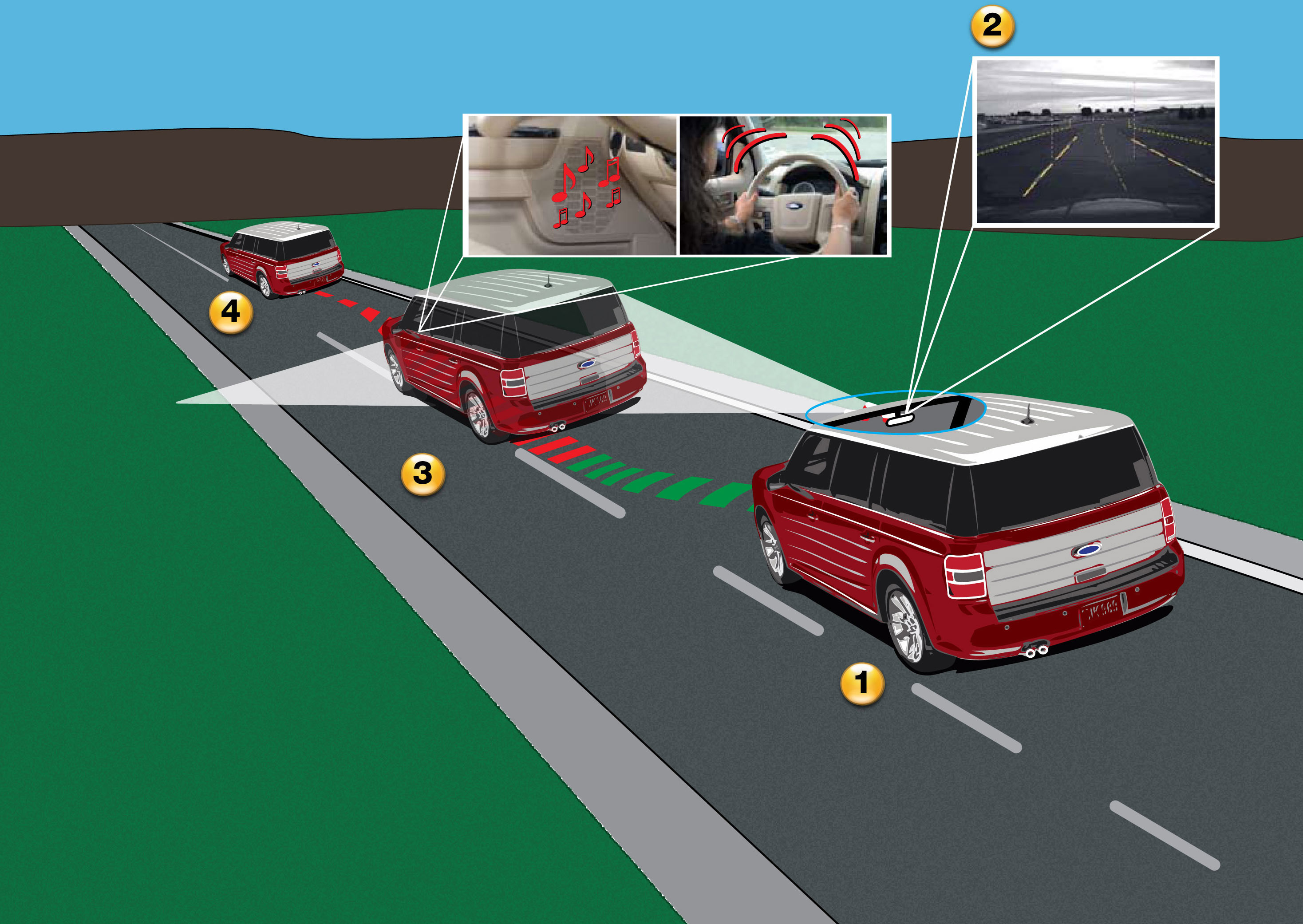
Over time, automotive safety has evolved from basic precautions to sophisticated systems designed to protect both drivers and passengers. Understanding this evolution is crucial not only for recognizing the progress made but also for appreciating the ongoing commitment to enhancing safety within the automobile industry. Let’s take a journey through the key milestones that have shaped car safety advancements over the years.
Development of vehicle safety innovations
In the early days of automobiles, safety was often an afterthought. The first production vehicles were simple machines with little regard for the safety of occupants. Most people of that era were unaware of the importance of seat belts, which were considered a luxury rather than a necessity. However, as the number of vehicles on the road increased, so did the number of accidents, leading to a growing awareness of the need for safety features.
One of the first significant advancements in automotive safety came in the form of seat belts. The three-point seat belt was invented in 1958 by Nils Bohlin for Volvo, marking a pivotal moment in car safety history. Initially met with resistance, the lifesaving potential of seat belts became undeniable over time. By the 1960s, regulations began to mandate their installation in new vehicles, drastically reducing fatalities and serious injuries in accidents.

Airbags emerged as another groundbreaking innovation in the 1970s, providing an additional layer of protection by cushioning occupants during collisions. The early iterations of airbags were not without issues, as deployment could pose risks to smaller occupants. Nonetheless, as designs improved, airbags became standard equipment, with frontal airbags being widely adopted by the late 1980s. These advancements have collectively saved tens of thousands of lives and continue to be integral in modern vehicles.
As technology progressed, so did the systems designed to assist drivers in maintaining control of their vehicles. The introduction of anti-lock braking systems (ABS) in the 1980s represented a major leap forward. This technology prevented wheels from locking up during sudden stops, allowing drivers to maintain steering control and reduce the risk of skidding. ABS has since become a standard feature in most vehicles, contributing to safer driving experiences in emergency situations.
The 1990s introduced electronic stability control (ESC), a technology that detects when a driver is losing control and automatically applies brakes to help maintain stability. This technology became mandatory for all new vehicles in 2011, further boosting road safety. By significantly reducing spin-outs and rollovers, ESC systems have proven vital in protecting drivers and passengers from serious injuries.

As we entered the 21st century, advanced driver-assistance systems (ADAS) marked the next phase in vehicle safety evolution. These systems use sensors and cameras to monitor the vehicle’s surroundings, offering features such as lane departure warnings, adaptive cruise control, and automatic emergency braking. The integration of these technologies not only helps prevent accidents but also assists drivers in making informed decisions on the road, creating a safer driving environment.
Advanced safety technologies
In addition to passive safety features, active safety technologies have become essential components in modern vehicles. Rearview cameras, which became mandatory in all new vehicles by 2018, address the significant issue of backover crashes. These systems provide drivers with a broader view of their surroundings, helping to prevent accidents caused by blind spots.
Furthermore, the introduction of blind spot warning systems has provided a crucial layer of safety for drivers changing lanes. Utilizing sensors or cameras, these systems alert drivers to vehicles in adjacent lanes, thereby minimizing the risk of collision.

As we continue to witness advancements in vehicle safety, the automotive industry is now on the cusp of a revolutionary shift towards autonomous driving. This new frontier holds the potential to eliminate human error, which is the leading cause of accidents. Self-driving vehicles will rely on an intricate network of sensors, cameras, and artificial intelligence to navigate and make decisions, ultimately aiming to provide safer and more efficient transportation solutions.
However, even as technology continues to advance, it’s imperative to recognize the importance of regular vehicle maintenance. The effectiveness of these sophisticated safety systems hinges on proper upkeep. From ensuring that your brakes are in excellent condition to regular checks on airbags and electronic systems, maintaining your vehicle is key to maximizing safety.
The evolution of vehicle safety has been a remarkable journey filled with innovations that have significantly changed the way we think about automotive safety. From the introduction of seat belts and airbags to the emergence of advanced driver-assistance systems and the promise of autonomous vehicles, each milestone has played a crucial role in reducing fatalities on our roads. Looking ahead, it’s essential that we embrace these advancements while also committing to regular vehicle maintenance to ensure that every safety feature functions optimally. As we navigate this ever-evolving landscape of automotive technology, one thing is clear: the quest for safer vehicles is far from over, and the future holds exciting possibilities for further enhancements in vehicle safety.

Future of vehicle safety
The future of vehicle safety is an exciting frontier, marked by rapid advancements and innovative technologies that promise to reshape our understanding of automotive safety. With the automotive industry evolving at a breakneck pace, it’s essential to examine the emerging technologies that will define the next generation of vehicle safety.
One of the most talked-about advancements is the development of autonomous driving technology. As self-driving vehicles inch closer to reality, the implications for road safety are profound. Human error remains a significant contributing factor in the majority of accidents, and autonomous vehicles have the potential to eliminate this variable. These vehicles rely on sophisticated algorithms, sensors, and artificial intelligence to navigate and make decisions, significantly enhancing safety by reducing the frequency of accidents caused by distractions, impaired driving, or poor judgment.
Moreover, the integration of Vehicle-to-Everything (V2X) communication systems is set to revolutionize road safety. V2X technology enables vehicles to communicate with each other and with infrastructure such as traffic lights, road signs, and even pedestrians. This technology can provide real-time information about road conditions, traffic patterns, and potential hazards, enabling vehicles to make better-informed decisions. Imagine approaching a blind intersection where your car receives data from a connected traffic light, alerting you to an oncoming vehicle. Such capabilities can significantly reduce the risks of collisions and improve overall traffic flow.

In tandem with these advancements, continued improvements in driver assistance technologies will play a critical role in enhancing vehicle safety. Features like adaptive cruise control, lane-keeping assist, and forward collision warning are already common in many modern vehicles, but we can expect these systems to become even more sophisticated. Future iterations might incorporate machine learning algorithms that allow vehicles to learn from driving behavior and environmental conditions, optimizing their performance in real-time and adapting to driver preferences.
However, with great technology comes great responsibility. As these systems become more integrated and complex, the importance of cybersecurity in vehicle safety will be paramount. Protecting vehicles from hacking and unauthorized access is crucial, as malicious interference could lead to catastrophic outcomes. Manufacturers will need to invest in robust security measures, and consumers should stay informed about the cybersecurity features of their vehicles.
While the focus on cutting-edge technology is thrilling, we must not overlook the role of traditional vehicle maintenance in ensuring safety. The effectiveness of advanced safety features heavily relies on the proper functioning of the vehicle’s systems. Regular maintenance checks can identify and rectify potential issues before they escalate into serious problems. For instance, brakes need to be in optimal condition to ensure that systems like anti-lock braking and electronic stability control work effectively. Similarly, airbag systems require routine inspections to confirm that they are operational and ready to deploy in case of an accident.

Beyond the mechanical aspects, the integration of technology in maintenance practices is transforming how service is conducted. Services such as predictive maintenance leverage advanced analytics and connected vehicle data to anticipate when a vehicle will require repairs before problems arise. This proactive approach can reduce the risk of malfunctioning safety features and extend the longevity of vehicles.
The relationship between emerging technologies and regular maintenance is symbiotic. While high-tech features are designed to enhance safety and performance, they also introduce new complexities. As vehicles become more dependent on electronic systems, owners must prioritize regular servicing to ensure these technologies function as intended.
Additionally, as the industry moves towards electrification, electric and hybrid vehicles will introduce new safety considerations. Battery management systems, charging infrastructure, and thermal safety are areas that will require rigorous attention. Understanding the unique maintenance needs of these vehicles will be vital for keeping drivers and passengers safe.

Looking ahead, it’s clear that we are on the brink of a new era in automotive technology. The journey from seat belts to sensors has been remarkable, but the future holds even more promise. The combination of autonomous driving, V2X communication, advanced driver assistance, and rigorous maintenance protocols will create a safer driving experience for everyone on the road.
The continuous development of vehicle safety reflects humanity’s desire to save lives and advance mobility. While we marvel at today’s technological wonders, we must remain proactive and vigilant about car maintenance. By investing in cutting-edge technologies and routine auto maintenance, we can ensure that future generations travel in safer conditions.
Related posts:
How Has Car Safety Evolved Over The Years?
Car Safety Evolution: A History
The Evolution of Car Safety: From Seatbelts to Advanced Driver Assistance Systems





